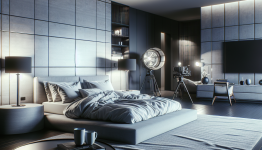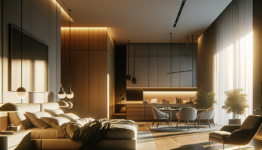Introduction to Bed Bugs

Bed bugs are small, parasitic insects that have been a nuisance to humans for centuries. Often associated with unclean environments, these pests can actually thrive in a variety of settings, making them a common concern in homes, hotels, and even public transportation. The resurgence of bed bug infestations in recent years has led to increased interest in bed bugs pictures, which help in accurate identification and awareness. Understanding the nature and behavior of these pests is crucial for effective management and prevention.
Bed bugs are part of the Cimicidae family and are known for their ability to feed on human blood. They are nocturnal creatures, typically active at night when their human hosts are asleep. This nocturnal behavior, combined with their small size, makes them difficult to detect until an infestation has become established. Pictures of bed bugs can be an invaluable tool in identifying these pests early and preventing a widespread infestation.
Identifying Bed Bugs: Physical Characteristics
The first step in managing a bed bug problem is accurate identification. Bed bugs have distinct physical features that differentiate them from other insects. Adult bed bugs are typically 5-7 millimeters in length, with a flat, oval-shaped body. Their color ranges from reddish-brown to a deep brown, especially after feeding. One of the key bed bug identification characteristics is their segmented body, which consists of a head, thorax, and abdomen.
Bed bug pictures can highlight these physical features, making it easier to distinguish them from similar insects like ticks or small cockroaches. The head of a bed bug is equipped with antennae and a proboscis, which they use to pierce the skin and feed on blood. Their six legs are adapted for crawling, and they do not have wings, hence they cannot fly or jump.
In addition to adult bed bugs, recognizing bed bug eggs and larvae identification is crucial. Eggs are tiny, about 1 millimeter in length, and are pearly white. They are often laid in clusters and can be found in crevices and seams of mattresses or furniture. Larvae, or nymphs, are smaller versions of adults and are almost translucent, making them hard to spot without careful inspection.
Common Locations of Bed Bug Infestations
Bed bugs are adept at hiding and can occupy a variety of locations within a home or building. Understanding where do bed bugs live is essential for effective detection and control. They are commonly found in places where humans rest or sleep for extended periods, such as beds, couches, and recliners.
Bed bugs tend to hide in the seams and folds of mattresses, box springs, and bed frames. Bed bugs pictures often reveal infestations in these areas, showcasing clusters of bugs and dark spots, which are fecal stains left by the insects. Other common signs of bed bug infestation include shed skins and a distinct musty odor, which is produced by the bugs’ scent glands.
Beyond the bedroom, bed bugs can inhabit other areas such as behind baseboards, within wall voids, and inside electrical outlets. They can also be found in luggage, backpacks, and clothing, which facilitates their spread from one location to another. In apartment buildings or hotels, infestations can easily spread between rooms through shared walls or pipe chases.
Life Cycle and Reproduction of Bed Bugs
Understanding the bed bug life cycle stages is important for recognizing the persistence and potential for rapid population growth of these pests. The life cycle of a bed bug consists of three main stages: egg, nymph, and adult.
Female bed bugs lay eggs in hidden locations, and a single female can lay hundreds of eggs during her lifetime. These eggs hatch into nymphs after about 6 to 10 days, depending on temperature and environmental conditions. Nymphs go through five developmental molts before reaching adulthood, a process that may take several weeks.
Bed bugs require a blood meal to progress through each stage of their life cycle. This reliance on blood makes them particularly difficult to eliminate, as they can survive for several months without feeding. Pictures of bed bugs at different life stages, including eggs and nymphs, can help in understanding and identifying infestations at various stages.
Recognizing Bed Bug Bites and Symptoms
One of the most telling signs of a bed bug infestation is the presence of bites on the skin. However, bed bug bite symptoms identification can be challenging, as the bites may resemble those of other insects. Bed bug bites typically appear as small, red welts, often arranged in a line or cluster. These bites are usually itchy and can lead to secondary infections if scratched excessively.
Bed bugs inject an anticoagulant and anesthetic during feeding, which is why the bites may not be immediately felt. It can take several hours to days for symptoms to appear, making it difficult to pinpoint the exact time of the bite. Pictures of bed bug bites on the skin can provide a visual reference for identifying these symptoms and distinguishing them from other causes of skin irritation.
In addition to bites, other symptoms of a bed bug infestation may include insomnia and anxiety, as individuals become aware of the presence of these pests in their sleeping environment. The psychological impact of a bed bug infestation can be significant, underscoring the importance of early detection and intervention.
In conclusion, having a clear understanding of bed bugs’ physical characteristics, common habitats, life cycle, and bite symptoms is essential for effective identification and management. Utilizing resources such as bed bugs pictures can greatly aid in these efforts, helping to prevent and control infestations before they become overwhelming.
How to Identify Bed Bugs in Your Home
Identifying bed bugs at home can be challenging due to their small size and elusive nature. However, recognizing these pests early is crucial to prevent an infestation. Bed bugs are tiny, oval, and flat insects with a reddish-brown color, about the size of an apple seed. One effective way to identify bed bugs is by examining the seams and folds of your mattress and other furniture for live bugs or their eggs, which are white and about 1mm in size. Additionally, look for rusty or reddish stains on bed sheets and mattresses, which are caused by bed bugs being crushed, or dark spots, which are their excrement.
To effectively identify bed bugs, using a flashlight and a magnifying glass can be helpful, especially in low-light areas. You might also notice a musty odor, which is emitted by the bugs when disturbed. If you suspect their presence, capturing bed bugs pictures can assist in confirming their identity and aid pest control professionals in diagnosis.
Common Places to Find Bed Bugs
Knowing where to find bed bugs in a house is essential for effective control. These pests are notorious for hiding in small, dark crevices, making them hard to detect. Common places bed bugs hide in your home include the seams of mattresses and box springs, bed frames, headboards, and even behind wallpaper or under loose paint. They can also be found in the folds of curtains, between cushions on sofas, and inside electrical outlets.
Given their small size and ability to hide, bed bugs can easily spread from one room to another. When inspecting for bed bugs, pay close attention to areas where people rest or sleep, as these bugs are attracted to body heat and carbon dioxide. It is also beneficial to take bed bugs pictures in these common hiding spots to monitor their presence and share with pest control services for more accurate identification and treatment.
The Life Cycle of Bed Bugs: From Egg to Adult
Understanding the bed bug life cycle stages is vital for effective management and eradication. The life cycle begins with the female laying eggs, which are tiny and white, in secluded areas. These eggs hatch into nymphs after about a week. Nymphs are immature bed bugs that undergo five molts before becoming adults. They require a blood meal before each molt, which typically takes about five weeks under favorable conditions.
Adult bed bugs can live several months without feeding, making them resilient pests. Capturing the different stages through bed bugs pictures can be enlightening and assist in determining the extent of an infestation. By documenting their life cycle, you gain insights into their reproduction rate and can plan appropriate control measures.
Bed Bug Bites: Identification and Reactions
Identifying bed bug bites on skin can be tricky, as they resemble other insect bites. Typically, bed bug bites appear as small, red, and itchy welts, often in a line or cluster. They usually occur on exposed skin areas such as the face, neck, arms, and hands. Reactions to bites vary; some people experience mild irritation, while others may develop allergic reactions, characterized by intense itching, swelling, or even blisters.
To differentiate bed bug bites from other insect bites, consider the time and location of the bites. Bed bugs are nocturnal and tend to bite during the night or early morning. Documenting symptoms of bed bug bites pictures can help in comparison and identification, providing valuable evidence to healthcare providers or pest control experts. If you suspect bed bug bites, it’s crucial to inspect your living space for other signs of bed bugs to confirm their presence.
DIY Methods for Capturing Bed Bug Pictures
Capturing clear bed bugs pictures can be challenging but is a crucial step for identification and treatment. DIY bed bug picture capturing techniques involve using basic tools like a smartphone or digital camera. It’s important to focus on areas where bed bugs are commonly found, such as mattress seams, furniture crevices, and baseboards.
Use a flashlight to illuminate dark areas and a magnifying glass to get a closer look at potential bed bug activity. To capture detailed images, ensure your camera is set to a high resolution. Patience is key, as bed bugs are adept at hiding. If you manage to capture images of bed bugs or their signs, such as eggs or excrement, these pictures can be instrumental in confirming an infestation and guiding professional pest control interventions.
Incorporating these methods and insights into your approach can significantly enhance your ability to identify and manage bed bug issues effectively. Using bed bugs pictures as a tool not only helps in identification but also aids in monitoring the success of control measures over time.
How to Identify Bed Bugs in Pictures
Identifying bed bugs through images has become an essential skill for homeowners, tenants, and pest control professionals alike. Bed bugs are small, elusive, and can easily hide in the smallest of crevices. Therefore, having a keen eye to spot them in pictures is crucial for early detection and prevention of infestations. When examining images of suspected bed bugs, it’s important to pay attention to specific characteristics such as shape, color, and size.
Bed bugs are typically oval-shaped and have a flattened body, which allows them to hide in tight spaces. In pictures, they often appear reddish-brown, particularly if they have recently fed. Their size can vary, but they are generally about the size of an apple seed. High-resolution images can help in identifying these details more accurately. Bed bug eggs, nymphs, and excrement might also appear in pictures and are key indicators of an infestation. The eggs are small, white, and oval, while nymphs are lighter in color and become darker as they mature. Recognizing these signs through images can be a primary step in identifying bed bugs and preventing their spread.
Common Mistakes When Analyzing Bed Bug Images
When analyzing bed bug images, common errors can lead to misidentifications and unnecessary panic. One frequent mistake is confusing bed bugs with other household insects like carpet beetles or cockroach nymphs. These insects can look similar in pictures, especially to the untrained eye. Carpet beetles are often mistaken for bed bugs, but they have a more rounded shape and patterned coloring, which can be distinguished in clear images.
Another common error in bed bug photo analysis is failing to consider the context of the image. For example, bed bugs are more likely to be found in areas where people sleep, such as mattresses, headboards, and bed frames. Images taken in these locations are more likely to contain bed bugs than those taken in kitchens or bathrooms. Lighting and image quality can also affect the analysis. Poor lighting can obscure important details, while high-quality images can reveal the specific features that differentiate bed bugs from other insects.
The Role of Technology in Enhancing Bed Bug Detection
Technology plays a significant role in enhancing bed bug detection through images. Advances in digital photography and mobile technology have made it easier for individuals to capture high-quality images of suspected bed bug infestations. Smartphones with high-resolution cameras allow users to zoom in on small details that are crucial for identification. Additionally, image recognition software and apps have been developed to assist in identifying bed bugs through images. These tools use algorithms to analyze the shape, color, and size of insects in pictures, providing users with a probability of a bed bug presence.
Moreover, technology in bed bug identification has expanded to include artificial intelligence (AI) and machine learning. These technologies can process vast amounts of image data, learning to distinguish bed bugs from other insects with increasing accuracy. For professionals, thermal imaging cameras and other detection devices can complement visual analysis by revealing the heat signatures of bed bug nests. As technology continues to advance, it becomes an invaluable ally in the battle against bed bug infestations.
Professional vs. DIY Bed Bug Identification: Pros and Cons
When it comes to bed bug detection, individuals often weigh the pros and cons of professional versus DIY bed bug identification techniques. Professional services bring expertise and experience to the table, often using advanced technology and methodologies to ensure accurate identification. Professionals are trained to recognize the subtle signs of an infestation and can provide comprehensive solutions for eradication. However, hiring a professional can be costly and may not be an immediate option for everyone.
On the other hand, DIY bed bug detection offers a cost-effective alternative. With the help of online resources and mobile apps, individuals can learn how to identify bed bugs through images, using their smartphones to capture and analyze pictures. DIY methods can be quick and convenient, allowing for immediate investigation upon suspicion of an infestation. However, these methods can be less reliable due to the potential for human error and a lack of professional expertise. Ultimately, the choice between professional vs DIY bed bug detection depends on the severity of the infestation, budget constraints, and personal preference.
How to Use Bed Bug Pictures for Prevention and Control
Bed bug pictures are not just tools for identification; they can also play a crucial role in prevention and control. Using pictures for bed bug prevention involves educating oneself and others about what bed bugs and their signs look like. By familiarizing oneself with images of bed bugs, eggs, and excrement, individuals can be more vigilant in checking their living spaces and catching infestations early.
Image analysis can be instrumental in bed bug control when used to monitor known infestation sites. Regularly capturing and comparing images over time can help track the effectiveness of treatment measures and ensure that bed bugs are not returning. Furthermore, sharing bed bug pictures with pest control professionals can aid in developing targeted control strategies.
In communal living situations, such as apartments or hotels, distributing educational materials with bed bug pictures can raise awareness and encourage proactive measures among residents and staff. Ultimately, bed bug control through image analysis empowers individuals and communities to take informed action against these persistent pests, reducing the risk of widespread infestations.
Quick Takeaways:
Bed bugs are small, elusive insects that can be a significant nuisance in homes. Identifying them accurately is crucial for effective control. Bed bugs pictures can be incredibly helpful for recognizing these pests. They have distinct physical features: a flat, oval body, reddish-brown color, and about the size of an apple seed. Understanding the bed bug life cycle stages—from egg to nymph to adult—can aid in identification and management. Eggs are tiny and white, often laid in clusters, while nymphs resemble adults but are smaller and lighter in color.
Bed bugs are nocturnal and prefer to hide in cracks and crevices during the day. Common places bed bugs hide in your home include mattresses, bed frames, headboards, and even behind wallpaper or electrical outlets. Capturing bed bugs pictures of these areas can help confirm an infestation. Bed bug bite symptoms can also aid identification; they usually appear as small, red, itchy welts, often in a line or cluster.
DIY bed bug picture capturing techniques can assist in early detection. Use your smartphone or a camera with a macro lens to take clear images of any suspected bed bugs or signs of infestation. However, it’s important to avoid common errors in bed bug photo analysis, such as mistaking other insects for bed bugs.
While professional pest control services offer thorough inspections and treatments, DIY bed bug identification techniques can be a cost-effective first step. Using pictures for bed bug prevention is also a proactive approach, allowing you to monitor potential problem areas.
FAQs:
1.
How can bed bugs pictures help in identifying an infestation?
Bed bugs pictures play a crucial role in identifying an infestation. Visual confirmation through images allows you to compare the physical features of bed bugs with other common household pests. Clear pictures can highlight distinct characteristics such as their oval shape and reddish-brown color. Additionally, images of bed bug life cycle stages—from eggs and nymphs to adults—provide a comprehensive understanding of what to look for during inspections. By capturing pictures of common signs of bed bug infestation like shed skins, fecal spots, or actual bugs, homeowners can confirm the presence of these pests and take appropriate action.
2.
What are some common errors in bed bug photo analysis?
When analyzing bed bugs pictures, common errors include misidentifying other insects as bed bugs. Carpet beetles and spider beetles are often mistaken for bed bugs due to their similar size and color. Another error is failing to capture clear, detailed images, which can lead to incorrect identification. Ensure your pictures are well-lit and focused, highlighting key features such as the segmented body and antennae. Overlooking the importance of context in photos, such as capturing images of potential hiding spots like mattress seams or baseboards, can also hinder accurate analysis.
3.
Where do bed bugs live, and how can pictures help locate them?
Bed bugs prefer to live in close proximity to their human hosts, often hiding in beds, mattresses, bed frames, and headboards. They can also be found in furniture, behind picture frames, under wallpaper, and inside electrical outlets. Bed bugs pictures taken in these locations can help pinpoint infestations. By photographing areas where bed bugs are likely to hide, like the seams of mattresses or the creases of upholstered furniture, you can document evidence of an infestation, such as live bugs, eggs, or fecal spots.
4.
What technology is used in bed bug identification, and how do pictures fit in?
Technology plays a significant role in bed bug identification. High-resolution cameras and smartphones with macro lenses can capture detailed images of bed bugs and their hiding places. Image recognition software is also being developed to identify bed bugs automatically from photos. Pictures are an essential part of these technologies, providing the visual data needed for analysis. Thermal imaging cameras can detect heat signatures, helping to locate bed bugs in hidden areas, while bed bugs pictures can supplement these findings by providing visual confirmation.
5.
How do professional and DIY bed bug detection methods compare?
Professional bed bug detection methods typically involve thorough inspections by trained technicians using specialized equipment, such as detection dogs or thermal imaging cameras. These methods are highly effective but can be costly. DIY bed bug identification techniques, including capturing and analyzing bed bugs pictures, offer a more affordable option. While DIY methods may not be as comprehensive, they enable homeowners to conduct initial inspections and monitor for potential infestations. Using pictures for bed bug prevention allows for early detection, which can reduce the severity of an infestation and the associated costs of professional treatment.
Conclusion:
Bed bugs are persistent pests that require diligent identification and management. Utilizing bed bugs pictures as part of your detection strategy can significantly enhance your ability to recognize and address infestations early. By understanding the bed bug life cycle stages and knowing where bed bugs live, you can focus your inspection efforts on likely hiding spots. Capturing clear images of these areas can help confirm an infestation and guide your response.
While DIY bed bug identification techniques, such as photographing and analyzing suspicious areas, offer a cost-effective way to monitor for these pests, it’s essential to avoid common errors in bed bug photo analysis. Misidentification can lead to unnecessary stress and treatment. Professional pest control services, equipped with advanced technology, provide comprehensive solutions but can be complemented by vigilant DIY efforts.
Incorporating pictures into your bed bug prevention and control plan empowers you to take proactive steps in safeguarding your home. Whether you’re identifying bed bug bites on skin or capturing images of potential hiding places, visual evidence is a powerful tool in the fight against these unwelcome invaders.
References:
1. https://www.epa.gov/bedbugs/bed-bugs-appearance-and-life-cycle
2. https://www.medicalnewstoday.com/articles/318083
3. https://bedbugs.tennessee.edu/biology-and-identification/
4. https://www.bedbugexterminatorpro.ca/bed-bug-pictures/
5. https://njaes.rutgers.edu/bed-bug/photos.php
If you are struggling with getting rid of bed bugs or just want to use some preventive measures, we recommend Saybyebugs, it exterminates bed bugs on contact without harmful chemicals, ensuring a safe environment for your family & pets. Its easy to use and highly effective, SayByeBugs helps you maintain a bed-bug-free home. Learn more and order today at SayByeBugs.com
If you really want to get rid of bed bugs today try SayByeBugs! It was developed as a safe and highly effective alternative among a sea of products that rarely deliver on their promises.









